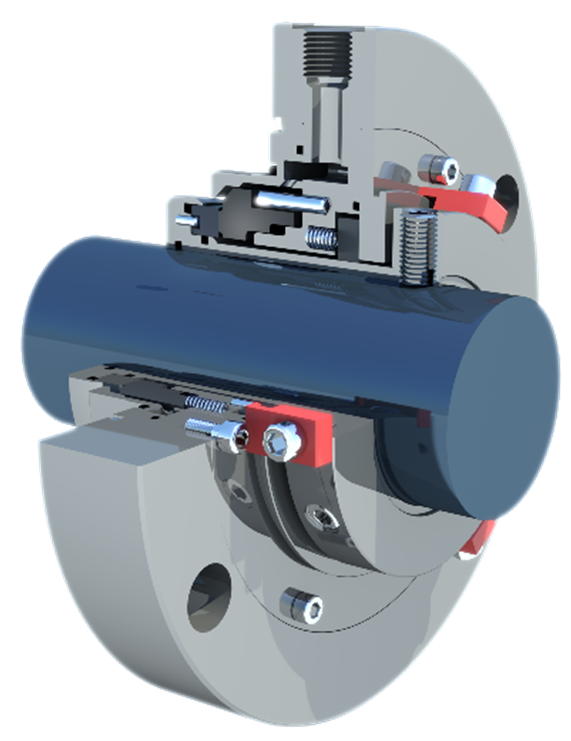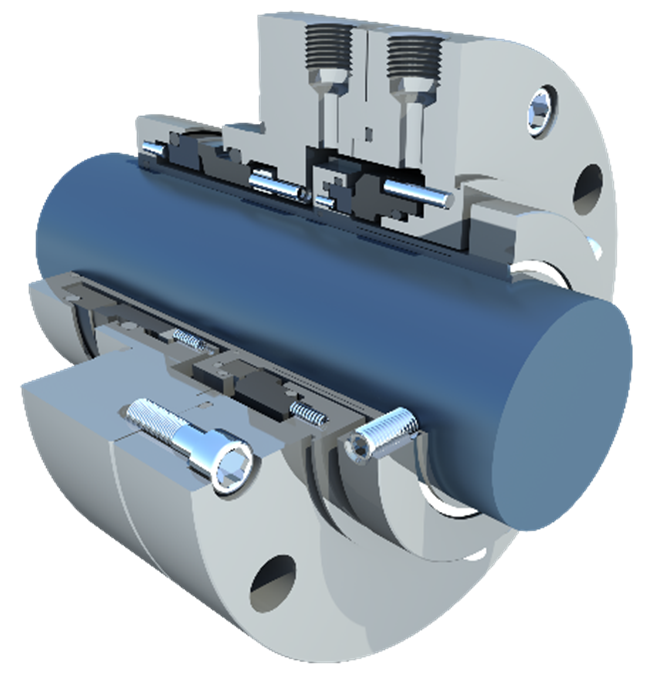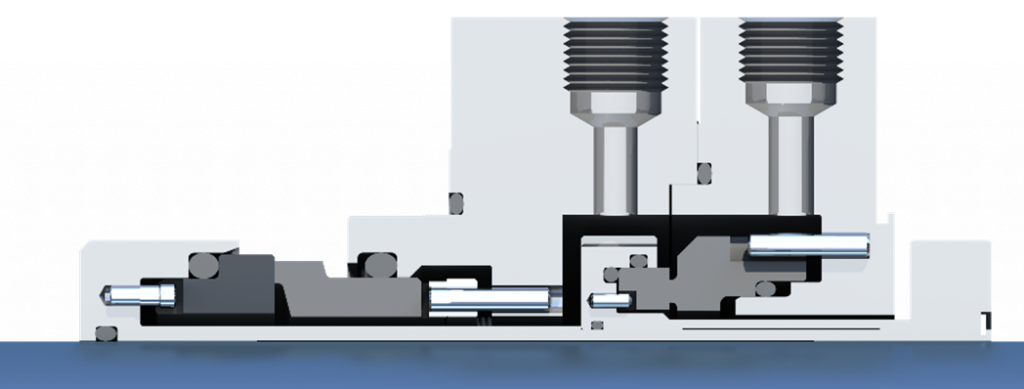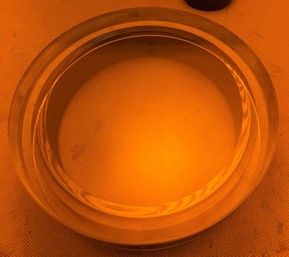
A.R. Thomson’s line of mechanical seals and detailed repair reporting are the answer.
The A.R. Thomson API seal lineup represents the next generation in mechanical sealing technology for the oil and gas sector. We utilized state-of-the-art technology in materials, manufacturing, design, and inspection to deliver the best Mean Time Between Failure (MTBF).
Stretch service life by going stationary.
One of the often-overlooked advantages of our mechanical seal line is the flexible stationary element, where we place the seal springs on the stationary seal face. This design choice provides advantages over legacy flexible rotating elements—offering the best MTBF.
Inherently self-aligning.
When the seal springs are located on the stationary face, they adjust to any angular misalignment automatically and, once adjusted, stay there. This prevents fatigue on the seal springs and stabilizes the fluid film.
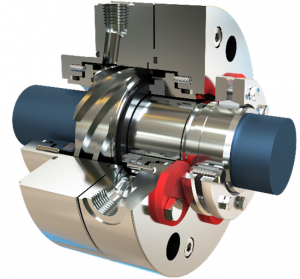
9700 API dual seal
Thermal distortion accommodated.
Pumps get hot, and when they do, they grow and change shape. A.R. Thompson’s stationary design handles this—without the need for adjustment.
9100 API single seal
Greater shaft speeds.
Flexible rotor seals are limited to a maximum surface speed of 20 m/s, meaning larger diameter high energy equipment will start to see dynamics issues with the springs at speeds above 3000 rpm and balance diameters over 4.5.” Our stationary design is rated to at least 25 m/s, making this seal the prime choice for larger, high-energy equipment seen in today’s oil and gas market.
9200 API dual seal
Improved understanding drives change.
Improved environmental awareness shows that legacy single seal designs do not provide the necessary containment for fugitive emissions. They also provide no containment in the event of primary seal failure. Unfortunately, older API610 pumps often don’t have the space necessary to fit a readily available dual API seal.
Two seals in one space.
The design of the Thomson API seal allows for a completely new approach to fitting dual seals into a small envelope. Removing the need for expensive replacement of rotating equipment and costly plant redesign.
The narrow cross section found in the 9200 dual API seal
Older API pumps often can’t accommodate the current crop of double API seals if based on I/D balanced seal faces.
A unique repair process with “avoid-failure” reporting.
With over 100 years of combined mechanical seal experience within our engineering group, we can reverse engineer any seal and determine and supply the correct face materials.
Ways to extend seal life.
Mechanical seals are intricate engineered products that may require service work—typically after a machine outage or failure. Simply repairing a seal is not always enough.
Nice to know.
At A.R. Thomson, we believe the level of detail we can provide is unmatched. Our reports can tell you if the seal was installed correctly and confirm the concentricity of an install to within 0.025mm—well inside any OEM install requirements.
Once we highlight the symptoms of a problem, we can then detail the cause and give you recommendations to eliminate the next failure.
Was the seal face blistered?
Face blisters can be challenging to diagnose in a seal failure. Often, they are too small to see with the naked eye. A.R. Thomson has the equipment necessary to show face topology in minute detail. This enables us to deliver the full story of the seal faces to the customer, face blisters, heat checking, and eccentric installation. We can show it all!
Blisters the way everyone else sees them.
Blisters the way A.R. Thomson sees them!
For more information on A.R. Thomson Group’s Mechanical seal service, to see an example of our failure reports, or more information on our line of API & TAC Mechanical Seals, please call 780.450.8080 or learn more about our API seals here.
Share This:




 CDN NEWS |
CDN NEWS |  US NEWS
US NEWS 







